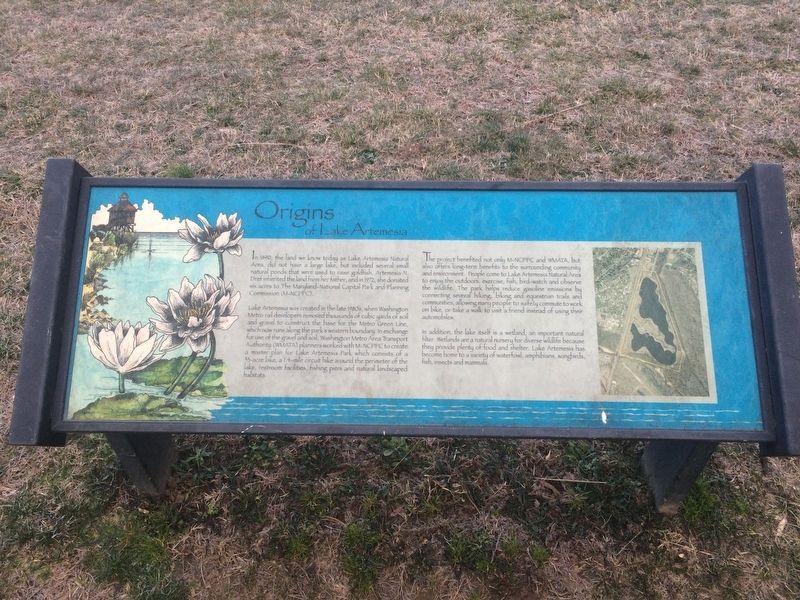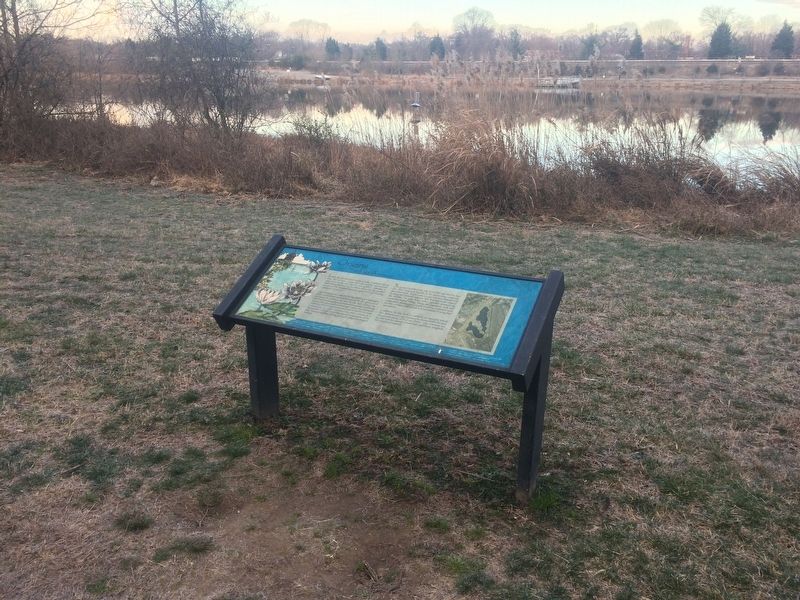College Park in Prince George's County, Maryland — The American Northeast (Mid-Atlantic)
Origins of Lake Artemesia
Lake Artemesia was created in the late 1980s, when Washington rail developers removed thousands of cubic yards of soil and gravel to construct the base for the Metro Green Line, which now runs along the park's western boundary. In exchange for use of the gravel and soil, Washington Metro Area Transport Authority (WMATA) planners worked with M-NCPPC to create a master plan for Lake Artemesia Park which consists of a 33-acre lake, a 1.4-mile circuit hike around the perimeter of the lake, restroom facilities, fishing piers and natural landscaped habitats.
The project benefited not only M-NCPPC and WMATA, but also offers long-term benefits to the surrounding community and environment. People come to Lake Artemesia Natural Area to enjoy the outdoors, exercise, fish, bird-watch and observe the wildlife. The park helps reduce gasoline emissions by connecting several hiking, biking and equestrian trails and communities, allowing many people to safely commute to work on bike, or take a walk to visit a friend instead of using their automobiles.
In addition, the lake itself is a wetland, an important natural filter. Wetlands are a natural nursery for diverse wildlife because they provide plenty of food and shelter. Lake Artemesia has become home to a variety of waterfowl, amphibians, songbirds, fish, insects and mammals.
Topics. This historical marker is listed in these topic lists: Parks & Recreational Areas • Railroads & Streetcars • Waterways & Vessels • Women. A significant historical year for this entry is 1890.
Location. 38° 59.37′ N, 76° 55.273′ W. Marker is in College Park, Maryland, in Prince George's County. Marker can be reached from 55th Avenue south of Berwyn Road, on the left when traveling south. On the grounds of Artemesia Lake Park. Touch for map. Marker is at or near this postal address: 8108 55th Avenue, College Park MD 20740, United States of America. Touch for directions.
Other nearby markers. At least 8 other markers are within walking distance of this marker. Welcome to the Luther Goldman Birding Trail (about 600 feet away, measured in a direct line); Dervey Augusta Lomax (about 600 feet away); Town of Berwyn Heights (approx. ¼ mile away); The Berwyn Heights Company (approx. ¼ mile away); Waugh Avenue (approx. ¼ mile away); a different marker also named Town of Berwyn Heights (approx. ¼ mile away); Washington Spa Spring & Gretta Railroad
Credits. This page was last revised on March 21, 2019. It was originally submitted on March 17, 2018, by Devry Becker Jones of Washington, District of Columbia. This page has been viewed 730 times since then and 81 times this year. Photos: 1, 2. submitted on March 17, 2018, by Devry Becker Jones of Washington, District of Columbia. • Bill Pfingsten was the editor who published this page.

